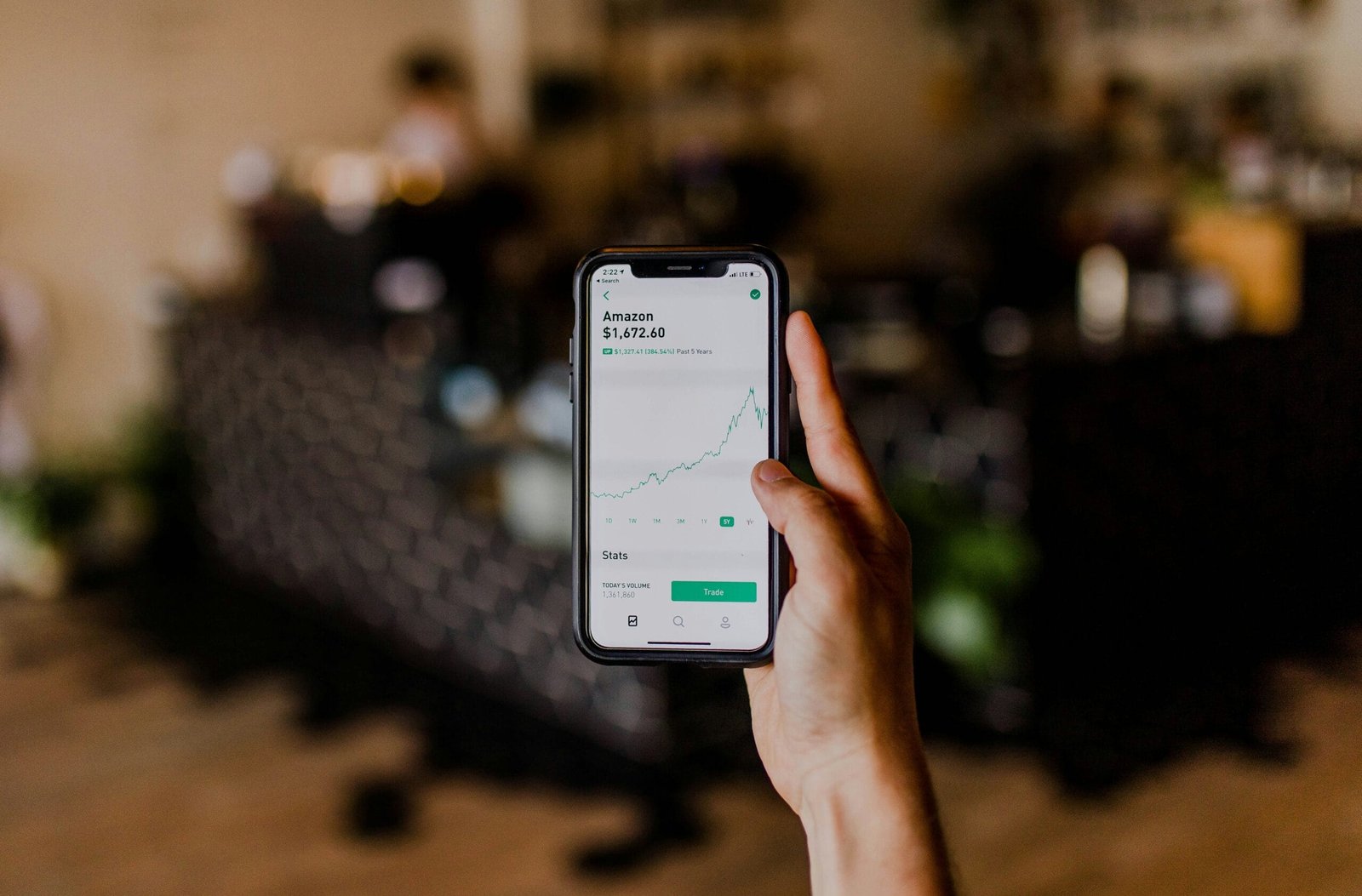Understanding Gold Investment
Gold investment has a rich historical significance in India, deeply rooted in the cultural and economic fabric of the country. For centuries, gold has been revered not only as a symbol of wealth and prosperity but also as a crucial component of religious and cultural rituals. Traditionally, gold continues to play a pivotal role during ceremonies such as weddings and festivals, signifying its enduring value. This cultural reverence translates into a strong demand for gold, establishing it as a vital asset class in Indian households.
One of the primary reasons investors turn to gold is its reputation as a safe-haven asset. During times of economic uncertainty, geopolitical tensions, or market volatility, gold maintains its allure as a store of value. Specifically in India, where economic fluctuations can be pronounced, gold serves as a reliable investment alternative. As a tangible asset, it not only offers security but also the potential for capital appreciation. Investors often view gold as a protective measure against adverse market conditions, especially in light of the unpredictable nature of investments in equities or real estate.
Furthermore, gold acts as a hedge against inflation and currency fluctuations. In an economy like India’s, where inflation can erode purchasing power, gold consistently preserves value over the long term. It often correlates inversely with the performance of currency and other financial instruments. Consequently, during periods of high inflation, when the value of rupees diminishes, the price of gold tends to rise, thereby providing a safeguard for investors. Given these factors, individuals seeking to diversify their portfolios often consider gold investment as a prudent strategy, further solidifying its significance in the Indian financial landscape.
Types of Gold Investments
Investing in gold has gained significant popularity in India, reflecting the asset’s status as a safe haven and a hedge against inflation. There are several forms of gold investments available, each with its distinct characteristics, benefits, and drawbacks. Understanding these types can aid investors in making informed decisions tailored to their financial goals.
One of the most traditional forms of gold investment is physical gold, which includes items such as jewelry, coins, and bars. Physical gold is often sought after for its tangible value and emotional significance, particularly when in the form of jewelry. However, it has some disadvantages, such as storage costs, security risks, and potential depreciation due to making charges associated with jewelry. Additionally, selling physical gold can sometimes be cumbersome due to the need to find buyers and negotiate prices.
Gold Exchange Traded Funds (ETFs) represent another popular investment option. Gold ETFs allow investors to buy units that reflect the price of gold without the need for physical storage. They boast high liquidity, enabling easy buying and selling on stock exchanges. However, investors should be mindful of management fees and the fact that they are subject to market volatility, which may not suit conservative investors.
Sovereign Gold Bonds (SGBs) are another investment avenue that Indian investors can consider. These government-backed bonds are issued in grams of gold and offer fixed interest, combined with capital appreciation. SGBs have the advantage of no storage costs and tax benefits if held until maturity, although early redemption may incur capital gains tax issues.
Lastly, digital gold is an emerging option, where one can invest in gold online through various platforms, which store the gold in secured vaults on behalf of the investor. This method combines convenience with zero storage costs. However, it is essential to select a reputable provider to mitigate risks associated with digital transactions.
Each of these gold investment types presents unique pros and cons, which must be carefully considered by investors based on their liquidity preferences, tax implications, and overall investment strategy.
Market Analysis for 2025
The gold market in India for the year 2025 is expected to be shaped by a variety of economic and geopolitical factors. As one of the largest consumers of gold globally, India’s market dynamics are influenced by domestic demand, global price trends, and traditional practices such as wedding purchases. A thorough analysis indicates that several key elements will play pivotal roles in shaping gold prices in the coming year.
Firstly, the economic conditions prevailing in India, including GDP growth, inflation rates, and currency fluctuations, will significantly impact gold’s value. A robust economy often leads to increased investment in gold as a hedge against uncertainty. Conversely, if inflation rates rise sharply, individuals may resort to gold as a means of preserving wealth, driving demand higher. Additionally, the Reserve Bank of India’s policies regarding interest rates will also influence investment sentiment. Lower interest rates generally encourage investment in gold, as the opportunity cost of holding non-yielding assets decreases.
Global market trends cannot be overlooked either. In 2025, the international gold market will likely experience volatility influenced by factors such as central bank policies in major economies, currency strength, and global economic recovery patterns post-pandemic. For instance, if major economies adopt expansive monetary policies, it could lead to a surge in gold prices as investors seek safe-haven assets.
Furthermore, geopolitical issues, such as trade tensions or conflicts, may create an environment of uncertainty, prompting investors to flock to gold. Countries facing instability may witness a spike in demand for gold for both investment and security purposes. Therefore, understanding these multifaceted influences will be essential for investors looking to navigate the gold market in India in 2025.
How to Buy Gold in India
Investing in gold is a significant financial decision, and understanding the various avenues available for purchasing this precious metal is vital. In India, potential investors have the option to buy physical gold, gold exchange-traded funds (ETFs), or sovereign gold bonds. Each avenue has its own advantages and processes that one should understand before making a purchase.
To acquire physical gold, individuals typically visit local jewelry stores, which offer a wide range of gold items, such as coins, bars, and ornaments. Additionally, one can explore online platforms which have become increasingly popular in recent years. When purchasing physical gold, it is essential to verify the quality of the product by checking for BIS hallmarks, ensuring that the gold meets national standards for purity. Moreover, comparing prices from multiple sources can also help in securing a fair deal.
For those interested in a more liquid form of gold investment, gold ETFs present an appealing option. These funds track the price of gold and are traded on stock exchanges, enabling investors to buy and sell them easily. To invest in gold ETFs, one must have a demat account and a trading account. Upon purchasing, investors can monitor their investments through the stock market, much like other securities.
Finally, sovereign gold bonds (SGBs) are another investment avenue, introduced by the Government of India. SGBs are issued in grams of gold and provide investors with interest rates in addition to the appreciation in gold prices. This option is particularly attractive as it eliminates the concerns associated with physical storage of gold. Investors can subscribe to SGBs during the offering period through banks, post offices, and authorized agents.
In conclusion, understanding the various methods to buy gold in India—physical gold, ETFs, and sovereign gold bonds—enables potential investors to make informed decisions that suit their financial goals. By following the outlined steps and verifying the authenticity of the gold purchased, individuals can secure their investments in this timeless asset.
Evaluating Your Investment Strategy
When it comes to investing in gold in India, a well-structured investment strategy is essential for success. The first step in crafting this strategy involves clearly defining your investment goals. Are you looking for a long-term store of value, or are you interested in short-term gains? Understanding your objectives will help shape your approach to gold investment and ensure that your decisions align with your financial ambitions.
Another critical factor to consider is your risk tolerance. Different investors have varying levels of comfort when it comes to potential losses. Gold is often seen as a stable investment, particularly during economic fluctuations, but it is not entirely without risk. Evaluating how much volatility you are prepared to accept will inform your decision about the proportion of your portfolio that should be allocated to gold. Typically, conservative investors may opt for a higher percentage in gold compared to those who prefer a more aggressive strategy.
Diversification is another cornerstone of a robust investment strategy. While gold offers several benefits, investing solely in one asset class can increase the risk of your overall portfolio. A balanced portfolio typically includes a mix of different asset types, such as equities, bonds, and commodities. By spreading your investments across various sectors, including gold, you can mitigate risk and potentially enhance returns over time. Consider the correlations between gold and other assets; for instance, gold may often perform well when stock markets are underperforming.
In summary, evaluating your investment strategy in gold should start with understanding your goals and risk tolerance, coupled with a commitment to diversification. This thoughtful approach not only encourages responsible investing but also positions you to navigate the complexities of the financial landscape effectively.
Tax Implications of Gold Investment
Investing in gold in India comes with various tax implications that every investor should understand. Primarily, the taxation on gold investment is governed by capital gains tax, which is applied to the profit made from selling an asset. In the context of gold, there are two categories of capital gains: short-term and long-term gains.
Short-term capital gains arise when gold is sold within three years of acquisition. In this case, the profits are added to the investor’s income and taxed as per the prevailing income tax slab rates. This means that depending on your overall income, the short-term gains can be taxed at rates ranging from 0% to 30%. Hence, for investors looking to profit from gold in a short period, it is essential to factor in these tax rates into their investment strategy.
Long-term capital gains, on the other hand, apply when gold is held for over three years prior to sale. The tax rate on long-term capital gains is currently set at 20% with the benefit of indexation. Indexation allows investors to adjust the purchase price based on inflation, which can significantly reduce the taxable profit. Additionally, if the sale proceeds of the gold are reinvested into specified assets within a prescribed timeframe, investors can avail of exemptions.
It is also important to note that investments in gold jewelry, unlike coins or bars, may not comply with the same taxation norms, as they might incur additional taxes like Goods and Services Tax (GST) at the time of purchase. Therefore, prospective investors in gold in India should be well-informed of these tax ramifications to optimize their investment returns effectively.
Common Mistakes to Avoid
Investing in gold can be a rewarding venture, but it is crucial to approach it with caution and knowledge. Many investors, especially those new to gold investment, tend to commit several common mistakes that can hinder their financial success. One notable pitfall is overpaying for physical gold. Investors often find themselves swayed by emotional appeals or flashy marketing tactics that can inflate the value of gold products. It is imperative to conduct thorough research prior to purchase, comparing prices and understanding the market rates to ensure you are making a sound investment.
Another common error is neglecting to stay informed about market trends. The gold market is influenced by various factors, including geopolitical events, economic indicators, and currency fluctuations. Failing to keep up with these developments can lead to uninformed decisions and missed opportunities. Regularly monitoring market conditions not only aids in making timely purchases and sales, but also equips investors with the necessary insights to adapt their strategies as required.
Furthermore, security measures for stored gold investments are often overlooked. While physical gold can be a tangible asset, it is also susceptible to theft and loss. Investors must prioritize safe storage solutions, whether that be a secure home safe, bank safety deposit box, or professional storage services. Implementing adequate security measures can protect your investment and provide peace of mind. Additionally, it is advisable to maintain comprehensive documentation of all transactions and valuations related to your gold purchases. This information becomes invaluable for record-keeping and can facilitate smoother future transactions.
By understanding these common mistakes and actively working to avoid them, investors can enhance their gold investing strategy and increase their overall chances of success.
Future Trends in Gold Investment
The landscape of gold investment in India is continually evolving, shaped by both consumer preferences and technological advancements. As we look ahead to 2025, several key trends are anticipated to impact the gold market significantly. First, the preference for gold as an investment vehicle is likely to broaden as younger demographics begin to enter the market. Millennials and Gen Z are increasingly inclined towards investment options that align with their ethical and sustainable values, which may drive innovation in products and services surrounding gold investments.
Additionally, technological advancements in gold trading platforms are set to enhance accessibility and transparency for investors. The rise of mobile trading applications and online marketplaces is making it easier for individual investors to buy and sell gold efficiently. These platforms often come equipped with features such as real-time pricing, historical data analysis, and simplified transaction processes, thus empowering investors with more information and control over their investments.
Moreover, the rise of digital currencies may also influence gold investment trends in India. As cryptocurrencies gain traction as alternative investments, many investors might consider diversifying their portfolios by including gold as a hedge against volatility. The intersection of traditional gold investment and emerging digital currencies could foster an environment where digital gold products—essentially gold-backed digital assets—become increasingly popular.
In essence, the future of gold investment in India is set to witness a confluence of traditional values and modern technological innovations. These trends suggest that while gold will continue to retain its allure as a safe haven asset, the methods of investing in gold will become more sophisticated, driven by a blend of consumer demand and the rapid advancement of technology.
Conclusion and Final Thoughts
Investing in gold in India continues to be a significant consideration for many individuals seeking to diversify their portfolios and secure their wealth against inflation and economic uncertainty. As discussed throughout this guide, gold serves as a reliable asset class that not only retains value over time but also offers liquidity and potential capital appreciation. Whether one chooses to invest in physical gold, gold ETFs, or sovereign gold bonds, each option has its unique benefits and should align with an investor’s financial goals and risk tolerance.
Furthermore, the importance of understanding the various market dynamics, such as geopolitical factors and local demand, cannot be overstated. Regularly keeping abreast of these influences can position investors to make informed decisions that align with current market trends. One of the most consequential takeaways from this comprehensive guide is the need for adaptability in investment strategies. The economic landscape is continually evolving, and the ability to pivot and adjust to these changes is essential for long-term success in gold investing.
Additionally, it is worth emphasizing the potential of gold as a hedge against economic downturns. Historical data suggests that during periods of market volatility or downturns, gold prices often hold steadier compared to equities, making it an attractive option for risk-averse investors. As one navigates the complexities of the investment landscape in India, proper research and strategic planning will lead to informed decisions regarding gold investment.
In conclusion, as 2025 approaches, engaging with the gold market can offer numerous advantages and opportunities. By evaluating personal financial situations, understanding the gold market, and staying informed, potential investors can effectively harness gold’s benefits as part of their investment strategy. It is essential to remain open to advice and continuously adapt one’s approach to maximize the value of this enduring asset.














Leave a Reply